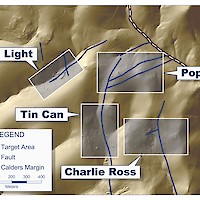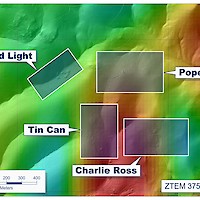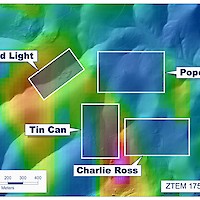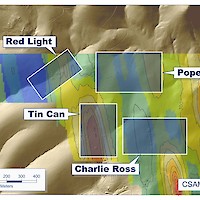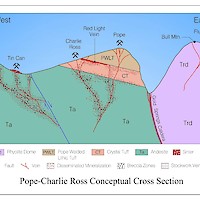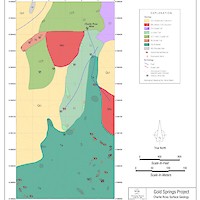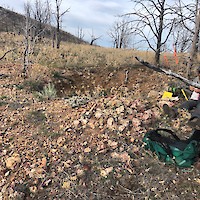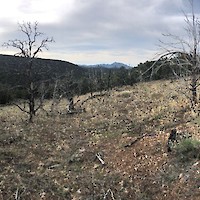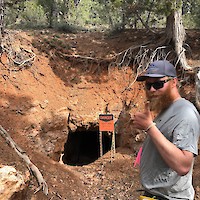System Type:
Epithermal, quartz-calcite veining, and stockwork zones.
Strike-Length:
The Charlie Ross target is mainly covered with an 800 metre strike length.
Resource:
None at this time
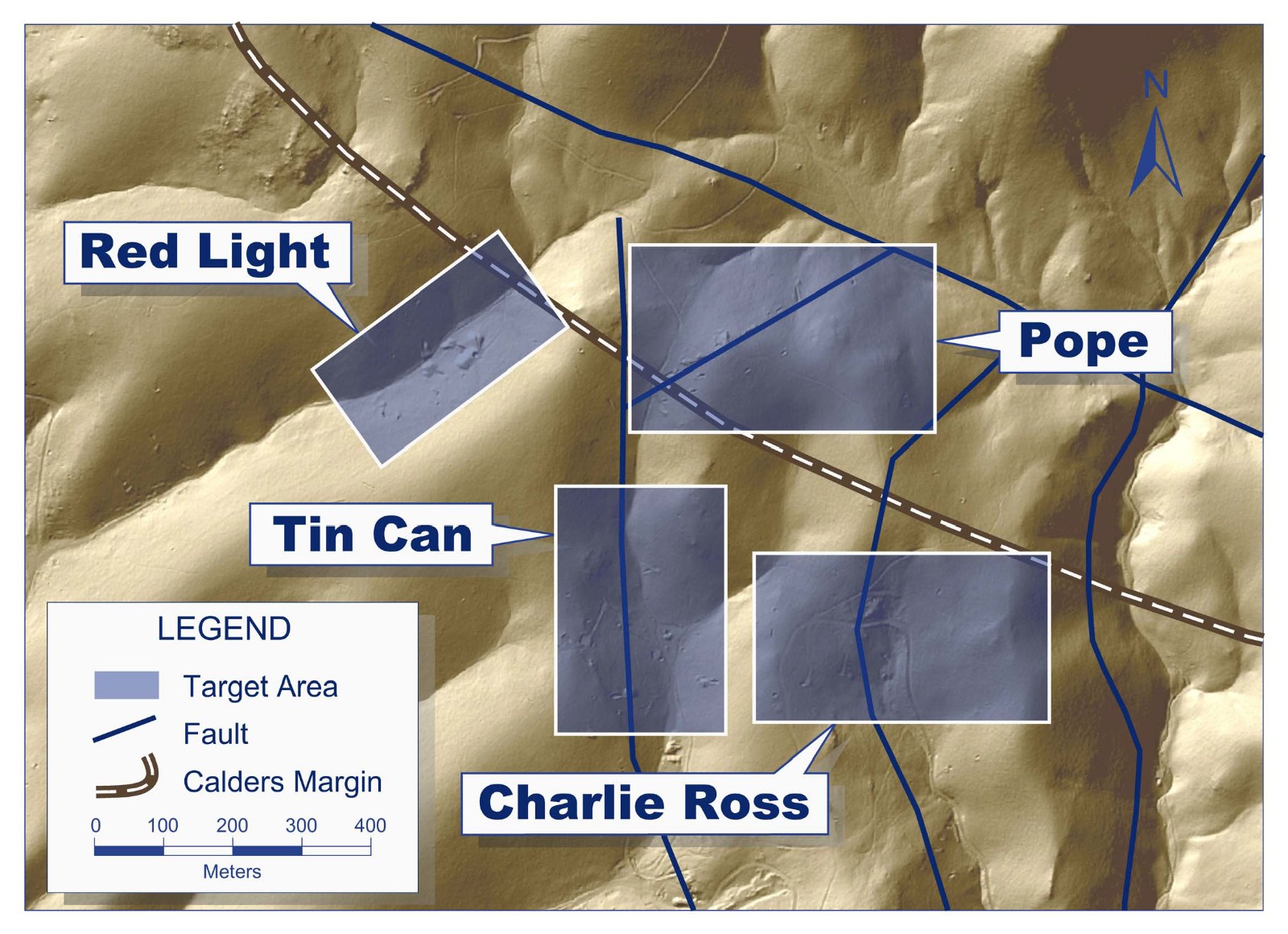
Location:
The historical Charlie Ross mine shaft, now part of the Charlie Ross Target area, lies on the Nevada side of the Gold Springs project and is located 500 metres southwest of the historical Pope Mine, which is now part of the Pope Target area.
Drilling:
None to date.
Geophysics:
The Charlie Ross area is coincident with ZTEM (airborne) and CSAMT (ground) resistivity anomalies. The Charlie Ross lies along the southern edge of a CSAMT resistivity anomaly that parallels the resistivity high of the Thor and Jennie targets and ends at the historical Pope Mine (Pope Target).
Geology:
The Gold Springs caldera is a prominent feature in the Gold Springs project area. Rhyolitic flows and intercalated tuffaceous sediments and tuffs occur within the caldera and extend beyond its margins, where they unconformably overlie the surrounding andesite flows in the historical Pope and Charlie Ross mine areas (Pope Target and Charlie Ross Target) and extend southward towards the historical Jennie Mine. Mineralization at the Charlie Ross is hosted within a non-welded tuff that is stratigraphically below the welded tuff units of the Pope target. The non-welded tuff is significant in that it is a highly porous unit that would be favorable for migrating gold bearing fluids trapped below the Pope welded tuff. This would create a bulk target which generally does not outcrop. The configuration of the non-welded tuff directly below the welded tuff at Pope is a similar situation as that seen at the Round Mountain gold mine in central Nevada.
Structural Geology:
The Charlie Ross target is an elongated zone associated with the north trending East Thor fault. The target is located at a flexure in the East Thor fault where it intersects east-west mineralized structures. The reported high-grade gold mineralization mined in the Charlie Ross shaft is hosted near this intersection and is closely associated with the east-west trending structures.
Historical Mining:
The Charlie Ross target includes the Charlie Ross historical shaft. Visible gold has been found in rocks from dumps near the open shaft. Historical reports describe a 175-foot shaft with a 40-foot talc zone containing streaks of gold tellurides and sylvanite with bonanza gold grades.
Geochemistry:
Gold mineralization is associated with quartz-calcite veins and breccias. Samples collected from areas of historical mining and trenching returned the best results for gold and silver with the highest grades being 2.4 g/t Au and 43.1 g/t silver. Samples within altered tuff units grade as high as 1.27 g/t gold. One sample of a massive quartz vein boulder returned 17.16 g/t gold in an area of mixed tuff float cover. Sample results have revealed promising mineralization within tuff units and high-grade vein targets. A total of 47 rock-chip samples were collected from the Charlie Ross target with 6 samples returning values above the resource cut-off grade.
Table: Rock Chip Sampling Results from Charlie Ross:
|
Sample |
Sample Type |
Target |
Description |
Au g/t |
Ag g/t |
|
103884 |
Dump |
Charlie Ross |
Oxidized, sericitized tuff from dump of the Charlie Ross shaft |
0.36 |
43.3 |
|
103890 |
Float |
Charlie Ross |
Massive quartz vein boulder |
17.16 |
45.1 |
|
103894 |
Oucrop |
Charlie Ross |
Strongly oxidized lithic tuff in large outcrop |
1.27 |
5.8 |
| 224402 | Float | Charlie Ross | Hydrothermal breccia in andesite | 0.55 | 6.2 |
| 224403 | Float | Charlie Ross | Silicified lithic tuff | 0.36 | <0.5 |
| 224411 | Outcrop | Charlie Ross | Quartz vein in silicified andesite | 0.33 | 7.2 |
A cutoff grade of 0.25 g/t Au was used, which is the cutoff grade of Gold Springs’ existing resources.

